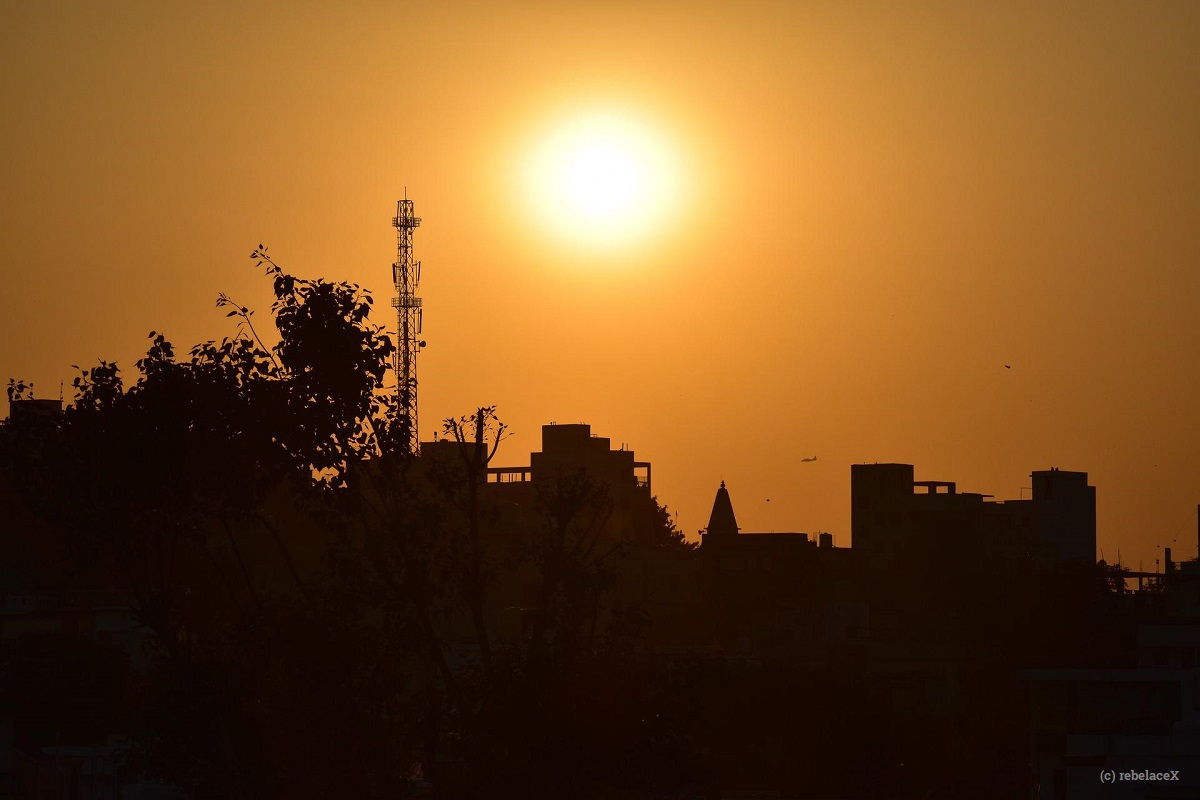Parts of India and Pakistan are currently experiencing record temperatures, driven by climate change and putting millions at risk.
The average maximum temperatures were the highest since records began 122 years ago, with New Delhi experiencing seven consecutive days of 40°C+ in April.
This unbearable heat is offering a glimpse at the new normal thanks to global warming which will make these extreme events more frequent and longer. What can be done in the face of such unprecedented deadly heat?

Sunset in India – millions are at risk from heat waves driven by climate change
The best adaptation is mitigation. These temperatures are unlivable, especially for those who work outdoors, the young, the elderly and those with underlying medical issues. There are limits to adaptation so the most important step is avoiding these events in the first place through emission reductions. Emissions need to be halved by 2030 at the latest to reduce the likelihood of these extreme heat events.
Extreme heat affects 68 million people globally, a number expected to increase to a billion if global heating rises to 2°C. Mitigation is key to avoid this, but advance adaptation can save lives in the meantime. Alongside emissions reductions there are some key adaptation responses which can be deployed:
At a city level:
- we can design cities better, making use of shading, trees, wind tunnels, rivers/fountains, district cooling etc. These are especially important in dense cities to avoid the heat island effect. Trees and fountains are proven ways to bring down temperatures in cities;
- more must be done to protect the most vulnerable first and focus on bringing down temperatures in and around informal settlements with cool roofs (roofs painted with white solar-reflective paint), ventilation, use of plants and shade and supporting the work of organisations such as Mahila Housing Trust;
- create community cooling centres, cooled spaces open to everyone, especially those without access to cooling at home. Make sure these cooling centres are powered with energy efficient and natural refrigerant systems to minimise emissions;
- enlist a Chief Heat Officer to lead on heat action suited to their local community and draw up a Heat Action Plan. These roles can reduce the risks of extreme heat for their city’s residents and improve heat resilience.
At a buildings level:
- build better buildings designed for high temperatures using proper materials, cool roofs, cross ventilation, courtyards, windcatchers. These reduce indoor temperatures without the need for mechanical cooling’
- improve access to the most energy efficient cooling technologies using natural refrigerants. The reality of a heat wave is that everyone who can afford to will run out and buy whatever air-con they can afford, which is often an energy-guzzling unit full of hydrofluorocarbons (HFCs), a family of extremely climate-damaging refrigerant gases. When all of these energy-hungry air-con units are switched on they overburden the electrical grid, meaning the dirtiest coal-fired power plants are kicked into action to meet the demand and/or power gets cut. They also leak these HFCs which trap heat in the atmosphere.


